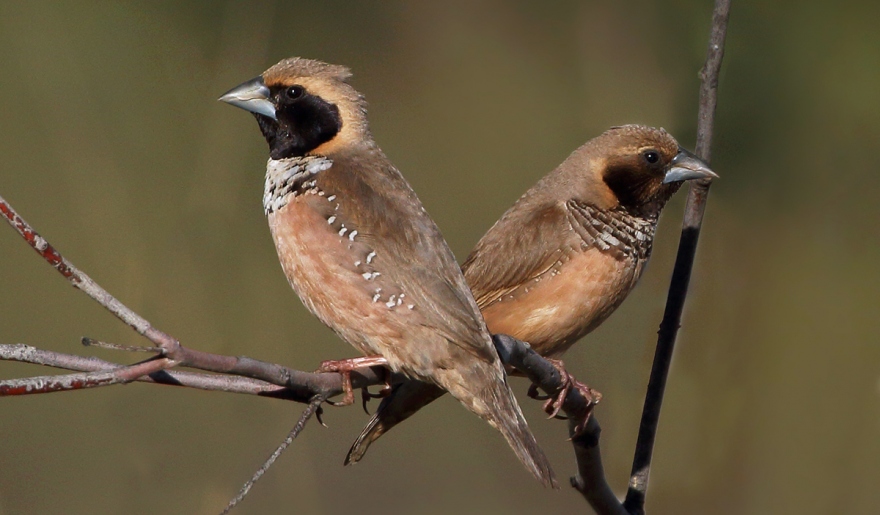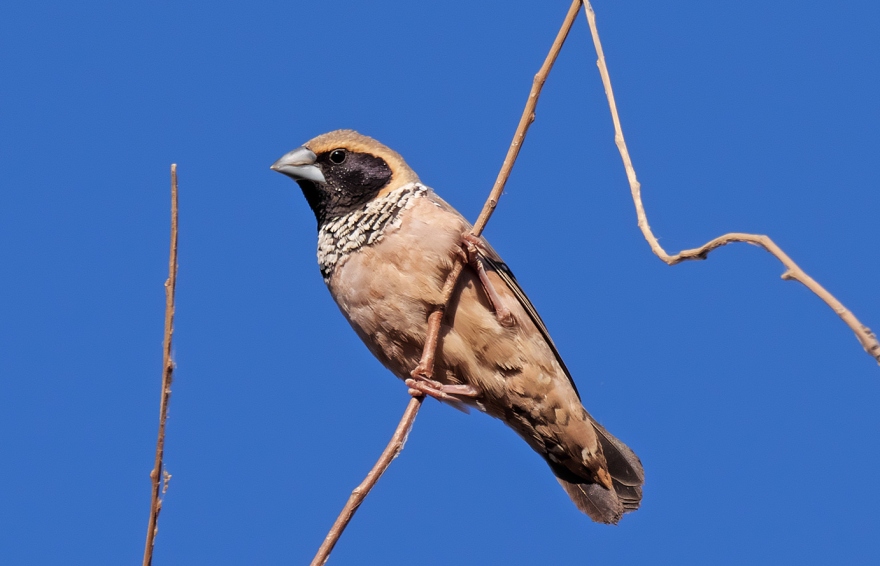The pictorella mannikin—known also as the pictorella munia—is a medium-sized finch found in the dry savannah grasslands of Northern Australia. They are somewhat challenging to breed in captivity, making them uncommon in Australian aviculture. They are a species best suited to an accomplished finch breeder with a large planted aviary.

Housing & Compatibility
Pictorella mannikins can be housed successfully as single pairs, or as single pairs in a mixed collection. They prefer a large planted aviary, but can tolerate a smaller aviary or flight cage.
They can be successfully housed with most placid finches, quail, doves, and (space permitting) Neophema parrots.
Pictorella mannikins should not be housed with any species with which they can hybridize, which includes all mannikins and munia species in the Lonchura family.
Diet & Feeding
A quality seed mix including canary seed, various millets and panicum forms the basis of the pictorella mannikin’s diet. Seed lacks many essential vitamins and minerals which must be compensated for by introducing other foods. Sprouted seed increases the nutritional value of seed and is a cheap way to improve your birds health. Freshly grown green seed heads should also be offered frequently.
Leafy greens should be provided throughout the year. Kale, bok choy, endive and silverbeet are the most nutritious and will be readily eaten. Spinach can also be given, but only sparingly as it can contribute to calcium deficiency.
Live food is an important component of the pictorella mannikins diet during the breeding season. Mealworms, maggots, termites, and small crickets will be consumed readily. Commercial soft finch food mixes can also be provided for an added nutrient boost. Outside of the breeding season their live food requirements are quite low.
Do not feed anything from the list of forbidden foods .

Breeding
Pictorella mannikins breed best in spring and autumn, with a hen bird that is at least 12 months of age. They can breed throughout the year if conditions are right. They have strong pair bonding and may prove difficult to re-pair if a partner is lost.
A wide variety of artificial nests will be accepted, however they have a preference for a dense shrub just above ground level. In an aviary they will prefer to nest in a box rather than in a basket. They do not tolerate nest inspections.
They typically lay 4-6 eggs in each clutch, which are incubated by both parents for approximately 14 days. Young birds fledge the nest at three weeks of age and are usually independent a month later.
Young birds can be left in the aviary once they reach independence.
Sexing
Can be visually sexed. Females have fuller colouration and much less white on the chest. While the male’s white chest spots will blend together into “splotches”, the female’s are more defined as a collection of individual dots.
Mutations
None established.
Health
A strict worming and parasite control regime is essential to ensure the long-term health of any finch collection. Pictorella mannikins, when properly cared for, can be expected to live for 7-8 years.
Pictorella mannikins will spend a lot of time foraging for insects on the aviary floor, making them more susceptible to parasites and diseases that spread via droppings. Regular cleaning and preventative healthcare is a must.